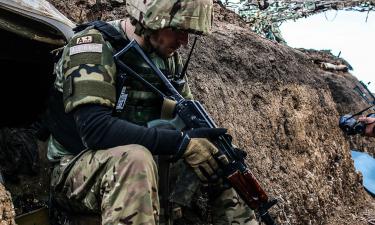Morbid obesity: Surgery only option?
Morbid obesity cannot be treated with diets, sports, and even drugs. No diet will help if your body weight is twice higher than the norm. In this case, the only option is surgery.
Yet, is it possible to rely on surgery alone without taking any other measures to lose weight?
Morbid obesity is a type of obesity with a BMI over 40. It is not amenable to therapeutic treatment and causes the development of associated diseases. It causes such diseases as hypertension, diabetes mellitus, joints and spine diseases, diseases of lower limb vessels, Pickwickian syndrome (respiratory failure), ischemic heart disease, ovarian dysfunction, infertility, prostate cancer, rectal cancer and other diseases.
Morbid obesity occurs in 3-5% of the population of economically developed countries. An individual whose body mass index (BMI) exceeds 40 requires 3-4 times more food than people of normal weight. Such people experience fullness much later. However, obese people can be helped by surgical removal of part of the stomach. Studies show that every kilogram lost as a result of this surgery adds 3-4 months of life.
There are several types of such surgeries. Their choice depends on the degree of obesity and physiological characteristics of the individual.
Adjustable bondage is the most common of all types of surgical treatment of obesity. Bondage is a silicone ring worn on the stomach, dividing it into two parts with a gap in between. Basically all of the existing bandages are adjustable. The bandage is tightened or loosened, depending on how many extra pounds a person needs to lose. A small part of the stomach (10-15 ml in volume) is left above the ring. In the process of eating it is filled with a small amount of food, and a person feels full quicker.
This surgery is also good because it is done via laparoscopy without cuts through tiny punctures in the abdomen. This method helps to remove 60% of excess weight in two thirds of the patients. However, for fans of soda, cakes and ice cream this method will not work, because they will still gain their calories the other way.
The bandage remains in the body for life. This naturally reduces the pleasure of eating. Dining with friends, the patients are unlikely to think about the taste of food and pleasant conversation because they will be busy thoroughly chewing their food. If a piece of poorly chewed food gets into a narrow bandage gap, it will cause terrible pain and heartburn. It may also happen that sometime after the surgery the bandage will slide up the stomach, and then the patient will generally be unable to take food. In this case another surgery will be required. In very rare cases, the bandage grows into the stomach wall and then it has to be completely removed.
Surgeons can make the stomach volume smaller, resembling a thin tube. In this case the stomach is cut in length and a part of it is removed. The procedure is called partial gastrectomy. People who underwent this surgery can eat anything, but only in very small quantities. If the patient continues consuming high-calorie sweet foods uncontrollably, even this radical surgery may prove to be in vain.
Consumption of large quantities of food will stretch the thin tube of the stomach, and the seam on the outer side of the stomach may start bleeding. In very rare cases holes may appear on the seam, which may lead to death.
Sometimes physicians combine the two methods. They separate the upper part of the stomach into two parts. The lower part of the stomach is sutured, but not removed.
This method is applied to people with a BMI over 45 and type two diabetes. After surgery, 80% of these people can go without medication for 3 months. However, because of the poor digestibility of nutrients they have to take vitamins for the rest of their life. Otherwise, they are guaranteed anemia, hair loss and osteoporosis.
Sometimes doctors perform more radical surgery. The stomach is transformed into a thin tube that by volume is less than ¾ of its standard size. The remainder of the stomach is connected with a loop of small intestine. Thus, most of the small intestine is separated. The digestive juices from the pancreas and gallbladder get to the food literally right before flowing into the large intestine. The pros of this method include the greatest weight loss.
However, this intervention is the most dangerous surgery and is conducted only in case of severe obesity - a BMI over 60. The surgery significantly alters the metabolism of the body which may cause regular indigestion and bloating. Individuals that undergo this surgery have to take vitamins and minerals for the rest of their life. As in the previous case, there is a risk of developing anemia, hair loss and osteoporosis.
Another new, promising process is stimulation of the stomach with electrical impulses. Electrodes are placed directly into the stomach wall. The outgoing impulses counteract the natural peristalsis of the stomach, and the food moves down the digestive system very slowly, causing long lasting sensation of fullness. If these patients continue to consume large amounts of food, they quickly feel sick.
Disadvantages include upset stomach or irregular stools, heartburn and stomach rumbling. In some cases, because of implanted metal electrodes the patients have problems passing inspection with metal detectors in airports.
Vadim Kirillov
Medpulse
Subscribe to Pravda.Ru Telegram channel, Facebook, RSS!




